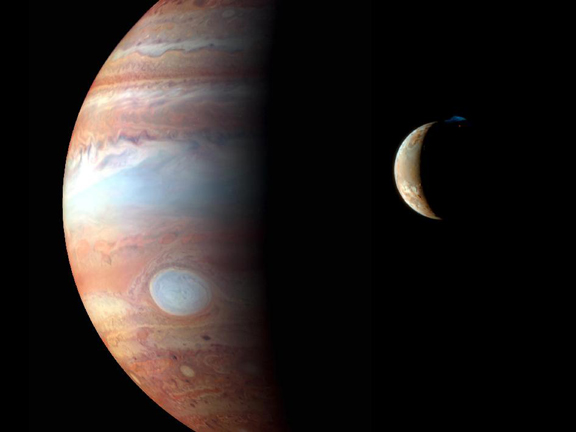
UNL’s Behlen Observatory near Mead will be open to the public from 7:30 to 10 p.m. Nov. 16.
Provided the sky is clear, visitors will be able to view a variety of objects with the observatory's 30-inch telescope and with smaller telescopes set up outside of the observatory. These include the moon (early in the evening), the planets Jupiter and Uranus, two kinds of star clusters, double or multiple stars, and the Ring Nebula in Lyra. At 8 p.m. there will be a presentation by a member of the observatory staff.
For the first time in more than a year, the Jupiter will be high enough in the evening sky to observe with the 30-inch telescope. Although Jupiter has more than 60 moons, only the four largest, Io, Europa, Ganymede and Callisto, are easily visible in the telescope. They are referred to as the Galilean moons in honor of Galileo Galilei (1564-1642), who first saw them 400 years ago.
At the time of the public night, Io will be passing in front of Jupiter and casting a shadow on the planet. With a diameter of 2,263 miles, Io is the fourth largest moon in the solar system (Earth's moon, with a diameter of 2,154 miles, is the fifth-largest). The most geologically active object in the solar system, Io has more than 400 active volcanoes.
In the 30-inch telescope, the dark and light bands in Jupiter's atmosphere can be seen. Because they are cloud patterns, the appearance of the planet changes over time and seldom looks the same twice.
There is no admission charge for the public night. Further information, including directions and maps to the observatory, can be found on the observatory website, http://astro.unl.edu/observatory, or by calling Edward Schmidt at 402-472-2788.
The Nov. 19 event is the observatory's last public night of 2012. Public nights will resume in the spring semester with openings scheduled for 7:30-10 p.m. Feb. 15, March 8 and April 12.